In the murky edges of mangrove forests, a small fish does something that sounds made up: it blasts insects out of the air with a single, well-aimed jet of water. For years, the archerfish was a footnote in nature documentaries, a quirky trickster with a good party trick. But a closer look turns that “quirk” into a physics masterclass and a window into how brains solve complex problems in messy environments. Today, high-speed cameras and careful lab experiments are revealing how this fish sculpts water into a flying hammer, predicts where a target will be, and even learns from its neighbors. The result is a story that blends biomechanics with behavior, and it’s changing how engineers design next-generation fluid systems.
The Hidden Clues
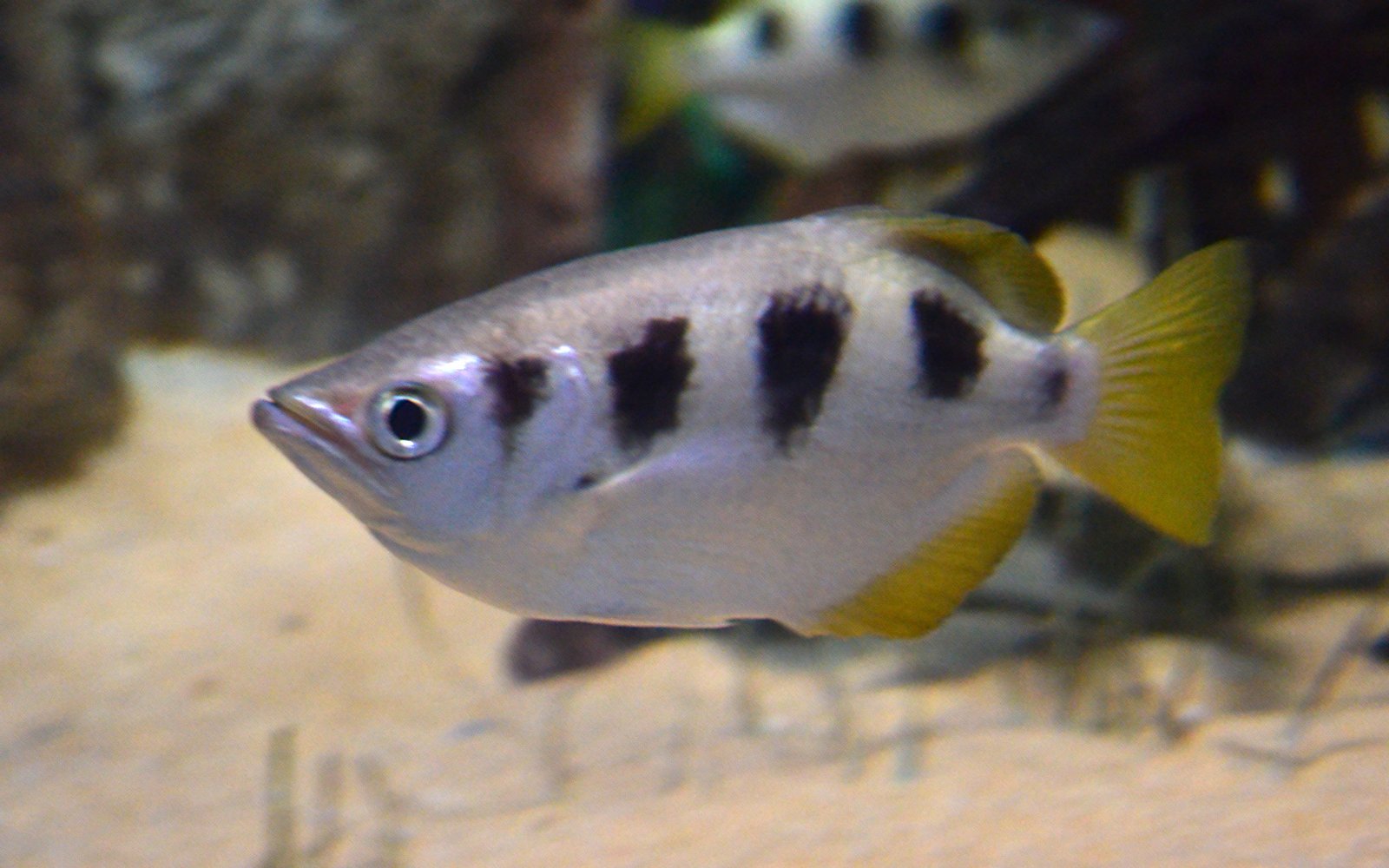
What kind of fish builds a tiny cannon in its mouth and fires it with surgical timing? The archerfish does, and the clues to its success are hiding in plain sight: the angle of its jaw, the shape of its tongue, and a split-second squeeze of the gill covers. In the wild, you’ll see a ripple, then a silver flash, and finally a beetle tumbling from a leaf like a dropped pebble. That fast sequence – observe, aim, fire, eat – looks simple until you realize the fish is aiming through a wavy, refracting surface that bends light and distorts space. It’s like trying to throw a dart at a reflection in a moving mirror.
I remember standing at a public aquarium as a kid, face pressed to the glass, when an archerfish snapped an ant right off a stick the keeper held above the tank. It felt outrageous, like watching a water pistol grow a brain. That’s the moment this fish went from trivia to obsession for me.
From Ancient Tools to Modern Science
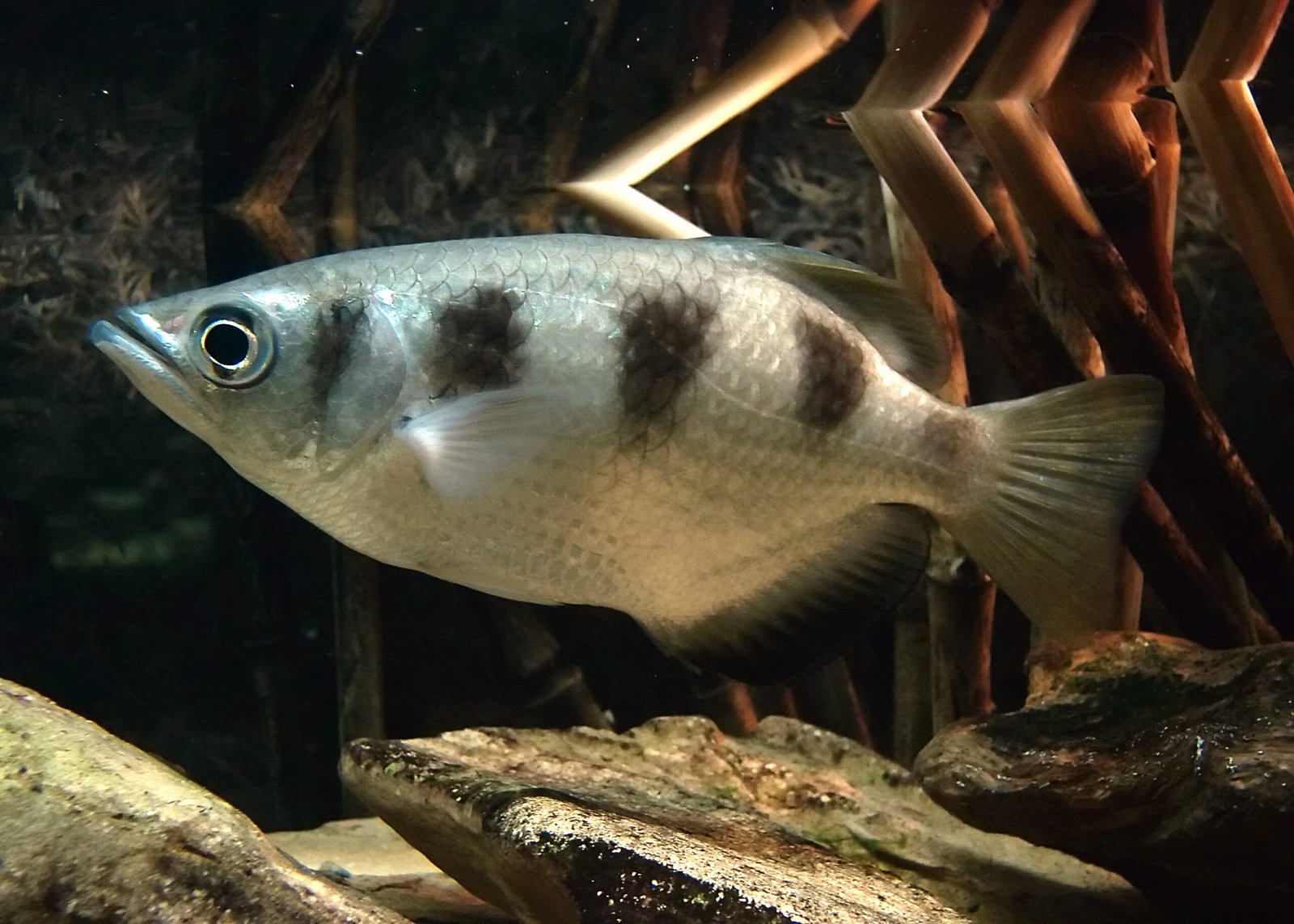
Archerfish hunting echoes a very old human idea: the blowpipe. A narrow nozzle transforms breath into a focused projectile; the fish’s mouth does the same with water. Early descriptions noted the accuracy and the dramatic splash, but the real breakthroughs came when biologists pointed high-speed cameras at the moment of firing and tracked the jet in flight. Slow-motion revealed that the stream doesn’t stay a uniform thread – it thickens and bunches into a fast-moving “head” that carries most of the punch. That elegant trick is not an accident; it’s shaped by how the fish opens and closes its mouth across milliseconds.
Modern labs turned this from footage into data – measuring jet speed, droplet shape, and impact force across different distances. With each incremental study, the archerfish shifted from mystery to model organism for dynamic fluid control.
How the Jet Is Built
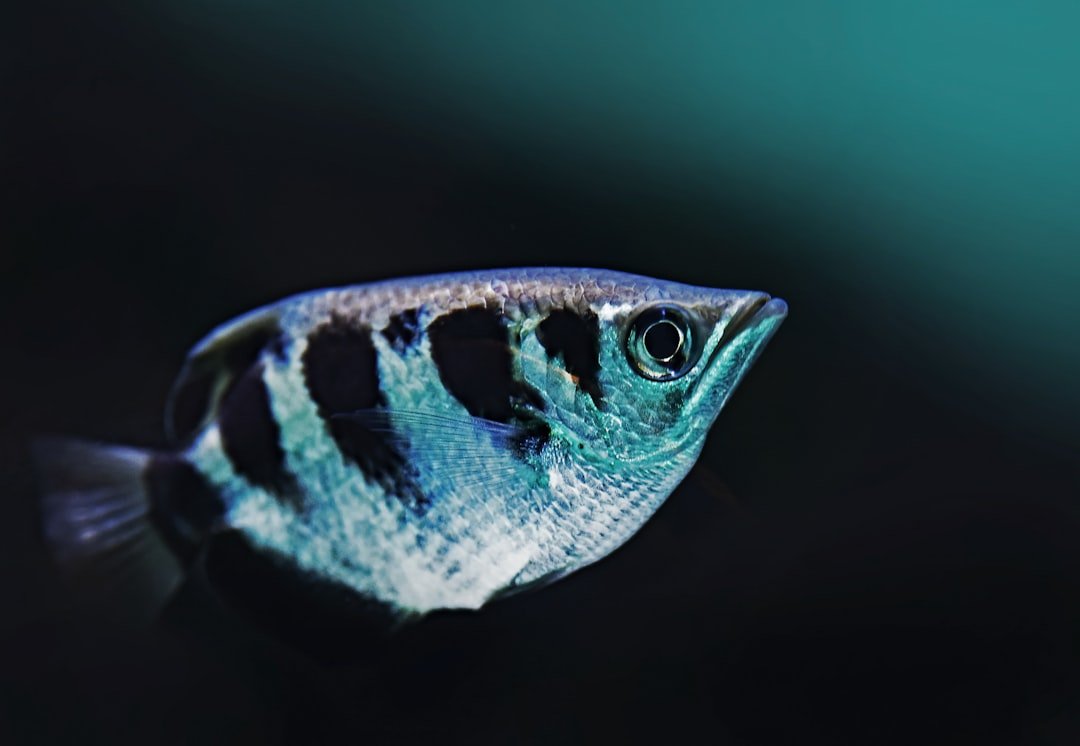
The archerfish crafts its water bullet with a movable nozzle: a groove along the roof of the mouth and a tongue that acts like a valve. By snapping the gill covers, it pressurizes the mouth cavity, then releases a jet that starts narrow and ramps up in flow. This changing flow rate matters; the later parts of the stream catch up with the earlier parts, piling into a thicker, faster “head” that hits like a tiny fist. In practical terms, the fish concentrates energy right where it needs it – on the target – rather than wasting it along the way. That’s smart engineering, wrapped in scales.
Lab tests also show the fish can tweak the jet for distance, adjusting speed and timing to keep the impact strong several body lengths away. Think of it as a living syringe pump coupled to a variable-geometry nozzle.
Seeing Through a Bending World
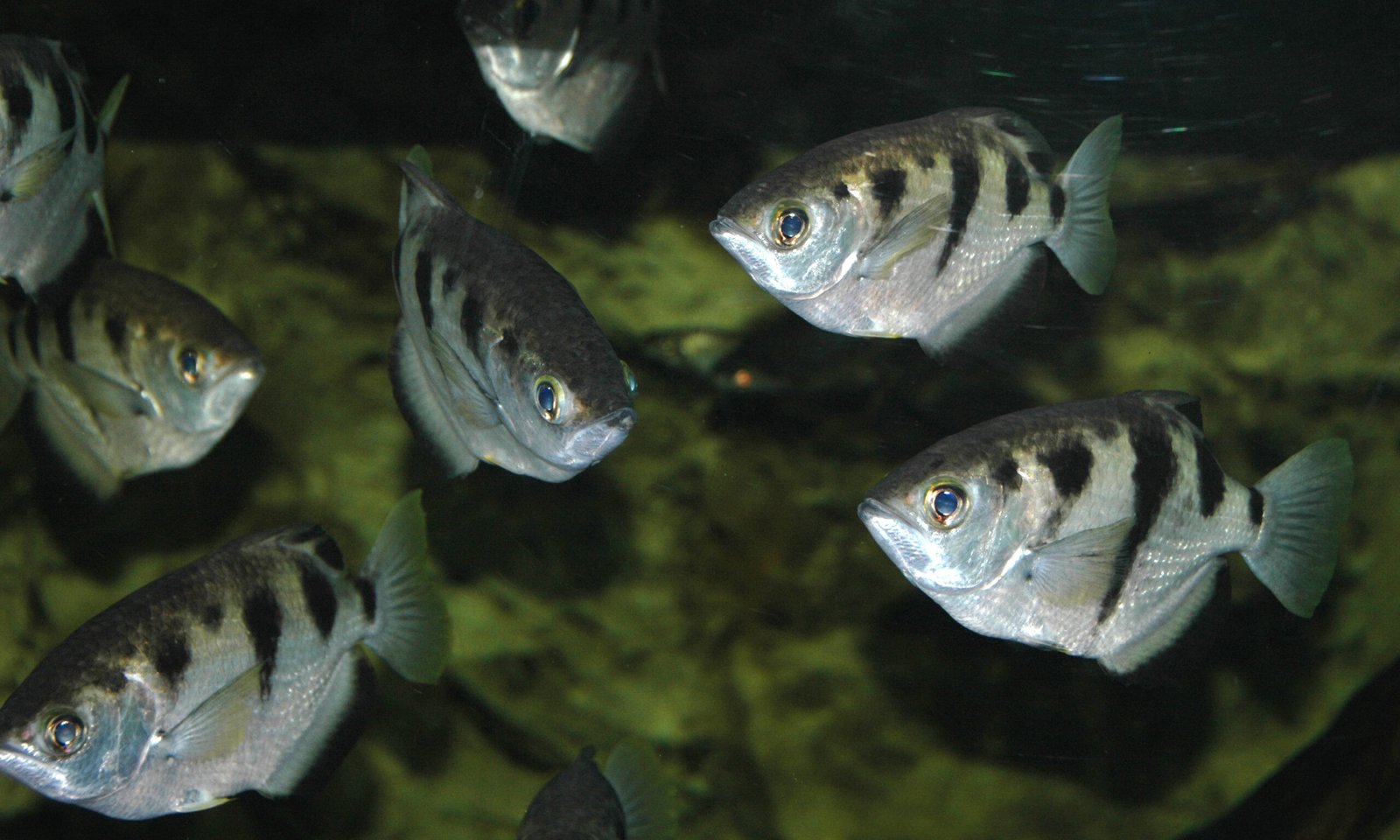
Light bends when it passes from water to air, which means the target isn’t where it appears to be. Archerfish compensate for that optical trick every time they fire, which is astonishing when you consider the swirling surface and shifting leaves above. They position themselves at angles that reduce error, then aim using experience, not equations; practice hones a reliable “aiming map” of where to point given distance and height. This isn’t just reflex – young fish improve with repetition, and they quickly transfer accuracy to new backgrounds and lighting. When the surface is choppy, they wait a beat, or adjust position, the way a basketball player resets before a free throw.
Once an insect is hit, timing takes over. The fish darts forward so it reaches the landing zone as the prey falls, minimizing theft by opportunists below.
Hitting a Moving Target
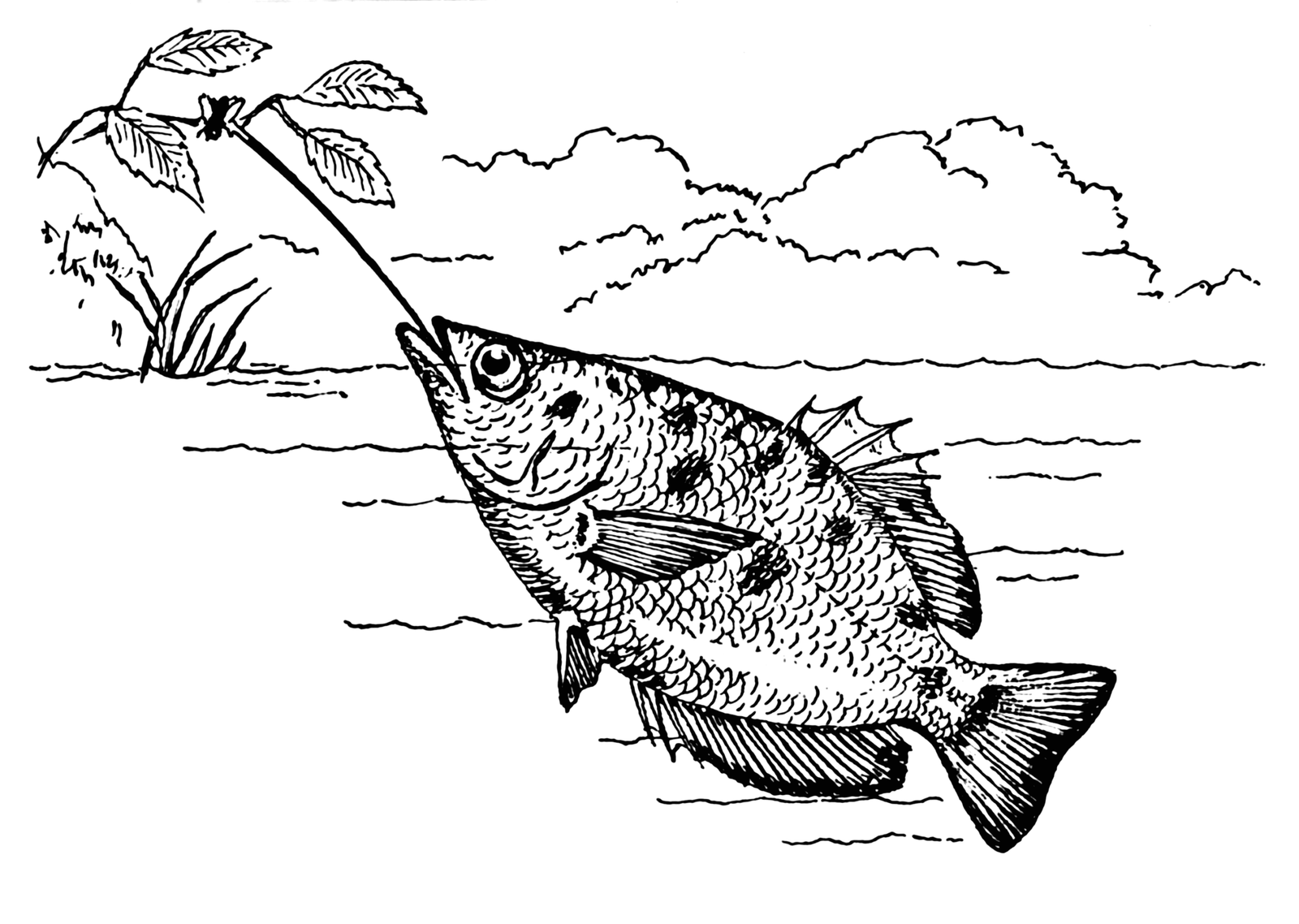
Insects rarely sit still. Archerfish often have to lead a shot, aiming ahead of where the prey will be by the time the jet arrives. Experiments where targets slide or swing show the fish can predict motion, correcting for speed and direction across repeated attempts. They’ll fire in bursts if the first shot glances off, and if the angle gets awkward, they switch tactics entirely and leap from the water to snatch the prize. That flexibility – ranged attack or ambush jump – turns a niche trick into a reliable meal plan.
In the cramped geometry of mangrove roots, those split-second choices decide who eats and who goes hungry. The fish’s calm persistence makes the difference between a miss and dinner.
Social Learning and Smarts
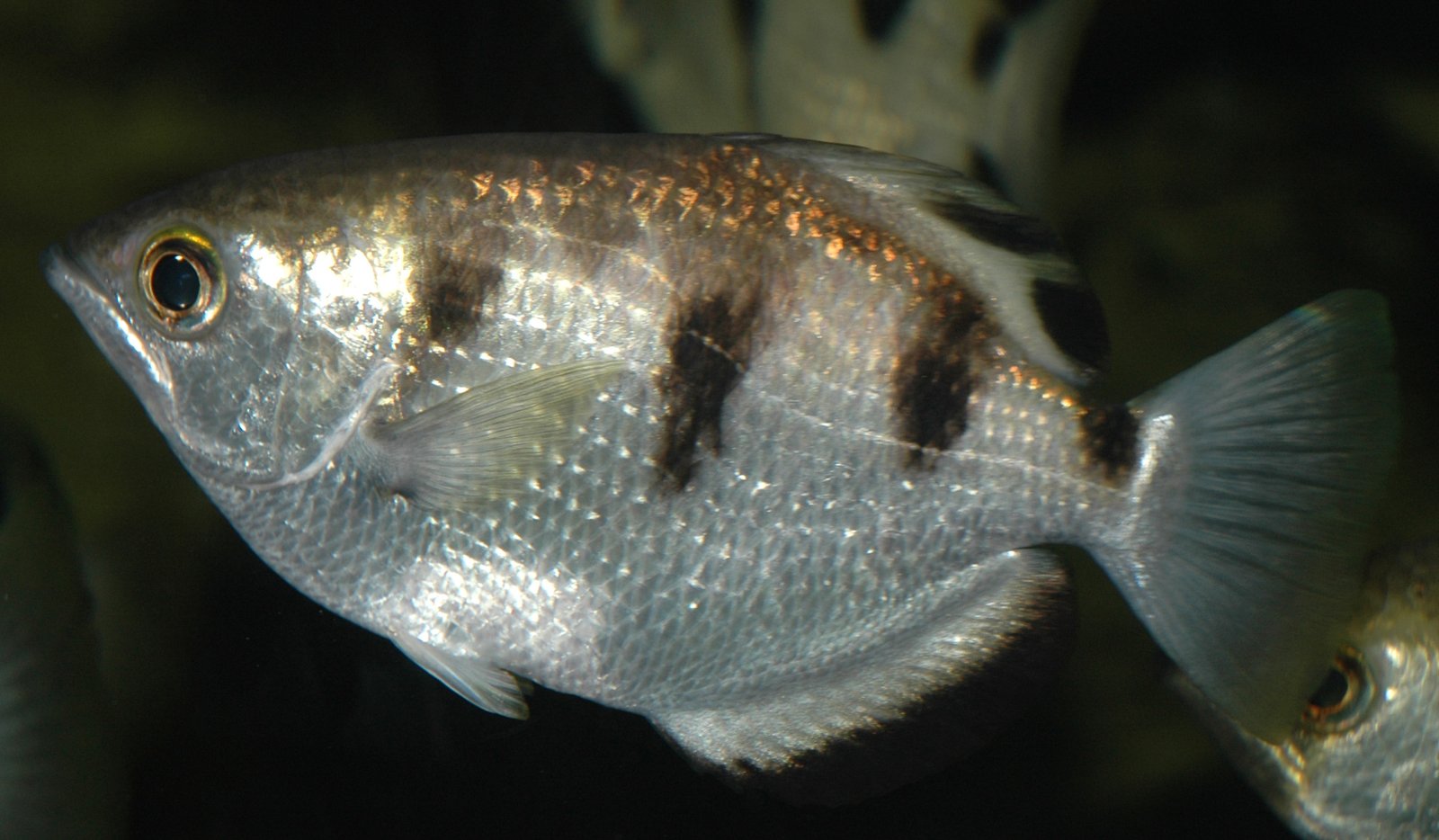
Archerfish don’t learn in isolation. In group settings, naive individuals watch skilled shooters and improve faster than they would alone, a simple but powerful form of social learning. They generalize too, applying lessons from one target type to another, which hints at a flexible memory rather than a rigid program. Cognitive tests suggest they can distinguish among complex visual patterns above the waterline, an odd skill for a fish yet handy for spotting edible silhouettes. All of this lines up with what keepsers and hobbyists see: once one fish in a tank starts nailing targets, the others pick it up.
If you’ve ever tried to teach a kid to skip stones, you’ve seen this kind of jump-started learning. Watch, try, adjust, repeat – only here the classroom is a brackish creek, and the chalk is a jet of water.
Why It Matters
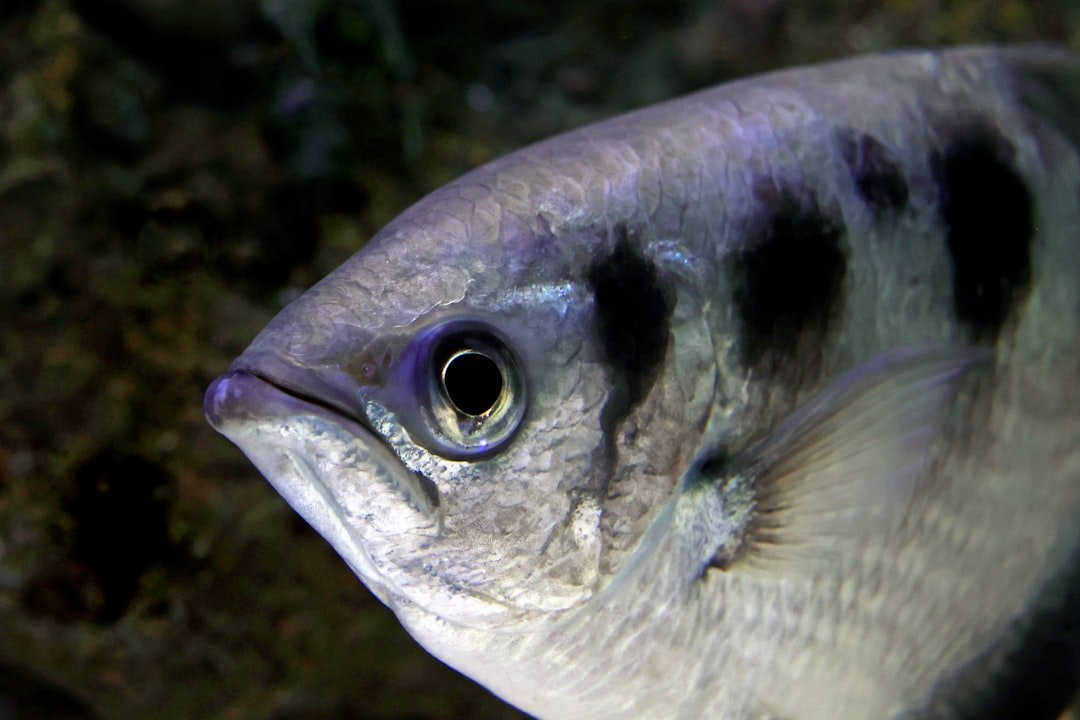
Biology’s toolkit often beats our machines at tasks that look simple but hide lovely physics. Archerfish show how to shape a fluid jet so it concentrates power at impact, which is a design lesson for everything from firefighting sprays to microfluidic devices. They also demonstrate robust targeting in the real world, not a lab fantasy – aiming through refraction, glare, and wind. Compared with many engineered nozzles that deliver steady flow, the fish’s time-varying jet acts like a natural pulse programmer that solves a problem mid-flight. That’s a different philosophy: don’t fight complexity; harness it.
Key takeaways engineers and ecologists both care about include:
– A gradually ramped flow forms a high-impact jet head at distance.
– Learned compensation for refraction allows accurate targeting across shifting surfaces.
– Flexible strategy – jet or jump – keeps success high when conditions change.
– Habitat quality (especially mangroves) underpins the behavior we admire.
Global Perspectives

Archerfish live from South and Southeast Asia to northern Australia, often where rivers meet the sea and mangroves stitch land to water. These brackish margins are biological goldmines, but they’re also among the first places squeezed by development, aquaculture, and pollution. When mangroves vanish, the platform for overhanging insects shrinks, and with it the stage for this remarkable hunting style. The fish can tolerate a range of salinities, yet even a tough specialist struggles when the canopy is gone and shorelines are hardened. Conservation here isn’t abstract; it’s the difference between a living gallery of experiments and a quiet, empty channel.
There’s cultural overlap, too. In some regions, archerfish are familiar in markets and home aquaria, where careful husbandry can spark curiosity about local wetlands rather than strip them.
The Future Landscape
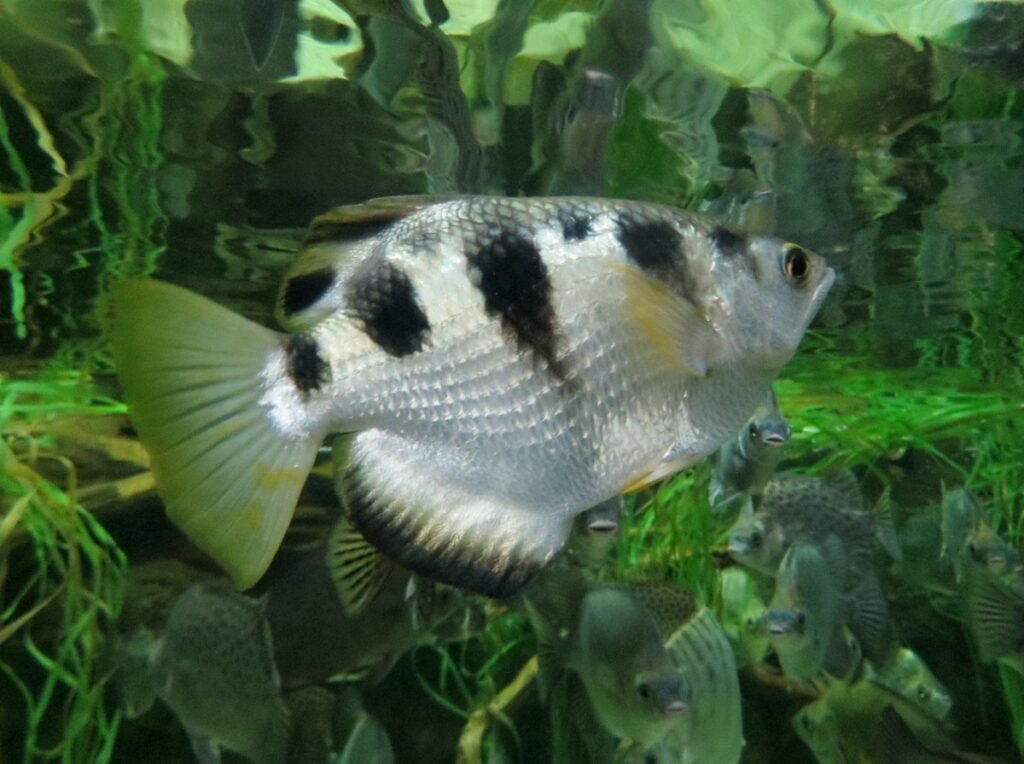
The Future Landscape (Image credits: Wikimedia)
Engineers are already copying the fish’s trick by building variable-flow nozzles and pulsed jets that keep impact strong without wasting energy. Small underwater robots could use similar fluid pulses to manipulate objects gently, or to deliver samples without stirring up clouds of sediment. On farms and in greenhouses, distance-optimized sprays might reduce water use while improving precision, borrowing control strategies straight from a mangrove creek. The next leap is sensing: pairing cameras and algorithms that anticipate target motion the way the fish does, not by perfect calculation but by fast, learned rules that work in bad conditions. That approach could make field robots less fussy and more useful when the sun glares and the wind won’t cooperate.
There’s a cautionary note. Without intact shorelines, we risk losing both the inspiration and the living labs that taught us these lessons in the first place.
Conclusion

If this story lodged in your brain, do one small thing for the watery edges where it unfolds. Support mangrove restoration groups, community-led wetland cleanups, or aquariums that use education programs to connect kids with brackish ecosystems. If you keep archerfish, buy captive-bred when possible and learn the natural history behind the name on the tank label. Share the science – those slow-motion clips do wonders to turn wonder into care – and back researchers who make their datasets and videos public. The next time you pass a muddy estuary that looks dull, remember there’s a marksman below, shaping water into a moving idea.
What other secrets are hiding in the places we hurry past every day?

Suhail Ahmed is a passionate digital professional and nature enthusiast with over 8 years of experience in content strategy, SEO, web development, and digital operations. Alongside his freelance journey, Suhail actively contributes to nature and wildlife platforms like Discover Wildlife, where he channels his curiosity for the planet into engaging, educational storytelling.
With a strong background in managing digital ecosystems — from ecommerce stores and WordPress websites to social media and automation — Suhail merges technical precision with creative insight. His content reflects a rare balance: SEO-friendly yet deeply human, data-informed yet emotionally resonant.
Driven by a love for discovery and storytelling, Suhail believes in using digital platforms to amplify causes that matter — especially those protecting Earth’s biodiversity and inspiring sustainable living. Whether he’s managing online projects or crafting wildlife content, his goal remains the same: to inform, inspire, and leave a positive digital footprint.




